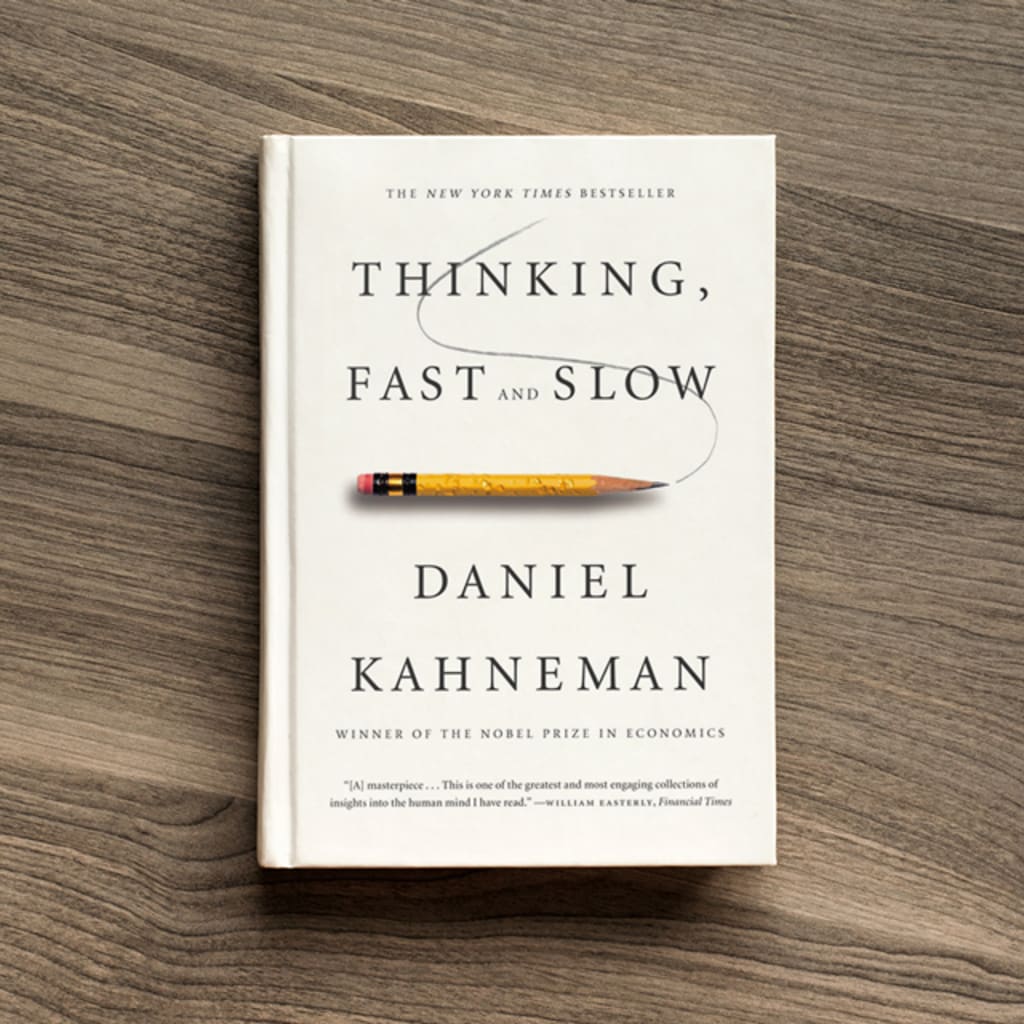
"Thinking, Fast and Slow" is a groundbreaking book written by renowned psychologist and Nobel laureate Daniel Kahneman. Published in 2011, the book explores the fascinating realm of human decision-making and the two systems of thinking that govern our minds. Drawing on decades of research, Kahneman presents a comprehensive and accessible overview of cognitive biases, heuristics, and the complexities of human thought processes. This summary provides an insightful exploration of the key concepts and insights presented in "Thinking, Fast and Slow."
Chapter 1: The Two Systems
Kahneman introduces the central premise of the book: the distinction between two systems of thinking. System 1 operates automatically, quickly, and intuitively, relying on heuristics and associations. System 2, on the other hand, is slower, deliberate, and analytical, requiring effort and conscious processing. The chapter lays the foundation for understanding the interaction between these two systems and their impact on our decision-making.
Chapter 2: Attention and Effort
This chapter delves into the mechanisms of attention and effort in cognitive processes. Kahneman explores the limited capacity of our attention and how it influences our ability to focus on tasks and make accurate judgments. He highlights the role of cognitive load and mental effort in decision-making and discusses how mental fatigue can lead to errors and biases.
Chapter 3: The Lazy Controller
Kahneman presents the concept of the "lazy controller," a term that describes System 2's tendency to delegate tasks to the more automatic System 1 whenever possible. He discusses the importance of this delegation in conserving mental effort but also highlights the potential pitfalls of relying too heavily on intuitive thinking.
Chapter 4: The Associative Machine
This chapter delves into the associative nature of System 1 thinking. Kahneman explains how our minds create associations and patterns based on previous experiences, which often lead to intuitive judgments and decisions. He discusses the influence of priming, the availability heuristic, and the representativeness heuristic on our thought processes.
Chapter 5: Cognitive Ease
Kahneman explores the concept of cognitive ease, which refers to the comfort and fluency with which information is processed. He discusses how cognitive ease can bias our judgments and influence our decision-making, leading to reliance on mental shortcuts and overlooking important considerations. The chapter also touches upon the illusion of validity and the role of emotion in shaping cognitive ease.
Chapter 6: Norms, Surprises, and Causes
This chapter focuses on the concepts of norms, surprises, and causality in human thinking. Kahneman discusses how we assess situations relative to social norms, the impact of unexpected events on our judgments, and our inclination to search for causal explanations even when they might be absent or irrelevant. He presents examples and experiments that illustrate the inherent biases and fallacies in these cognitive processes.
Chapter 7: A Machine for Jumping to Conclusions
Kahneman explores the human tendency to form quick and often erroneous judgments, known as the "jumping to conclusions" bias. He delves into the factors that contribute to this bias, such as overconfidence, the confirmation bias, and the illusion of validity. The chapter emphasizes the challenges of critical thinking and the need for vigilance in avoiding cognitive traps.
Chapter 8: How Judgments Happen
This chapter discusses the mental processes involved in making judgments and the inherent biases that influence them. Kahneman explores anchoring, the availability heuristic, and the planning fallacy. He highlights the difficulties in overcoming these biases and offers strategies for improving judgment accuracy.
Chapter 9: Answering an Easier Question
Kahneman introduces the concept of heuristics, which are mental shortcuts we use to simplify complex problems. He discusses the availability heuristic, the representativeness heuristic, and the use of substitution—answering a difficult question by addressing an easier, related question. He highlights the biases and limitations associated with these heuristics.
Chapter 10: How Causes Are Judged
This chapter explores how we assign causality to events and the biases that influence our causal judgments. Kahneman discusses regression to the mean, the illusion of understanding, and the narrative fallacy. He emphasizes the challenges of accurately assessing cause and effect relationships and the potential for cognitive errors in this process.
Chapter 11: The Law of Small Numbers
Kahneman examines our tendency to draw sweeping conclusions based on limited sample sizes and the implications of this bias. He discusses the law of small numbers, statistical reasoning, and the gambler's fallacy. The chapter provides insights into the misconceptions and biases that arise from our reliance on limited data.
Chapter 12: Availability, Emotion, and Risk
This chapter delves into the relationship between availability, emotion, and risk assessment. Kahneman explores how the availability heuristic influences our perception of risk and the role of emotions in decision-making. He discusses the impact of vividness, personal experiences, and media exposure on our risk judgments.
Chapter 13: Experienced Well-Being
Kahneman distinguishes between two types of well-being: the experiencing self and the remembering self. He explores how our memories shape our overall assessment of happiness and discusses the discrepancies between the two selves. The chapter sheds light on the complexities of subjective well-being and challenges conventional notions of happiness.
Chapter 14: Thinking About Life
In the final chapter, Kahneman reflects on the broader implications of the book's findings and their significance in understanding human thought processes. He discusses the limitations of our intuitive judgments and the importance of critical thinking in decision-making. The chapter encourages readers to adopt a more nuanced perspective on human cognition and embrace the benefits of careful analysis.
Conclusion:
"Thinking, Fast and Slow" offers readers a thought-provoking exploration of the complexities of human thinking and decision-making. Through the lens of the dual systems of thought, Kahneman uncovers the biases, heuristics, and cognitive shortcuts that influence our judgments and choices. This summary provides an overview of the key concepts and insights presented in the book, inviting readers to delve deeper into the fascinating world of human cognition and gain a deeper understanding of their own thinking processes.






Comments
There are no comments for this story
Be the first to respond and start the conversation.